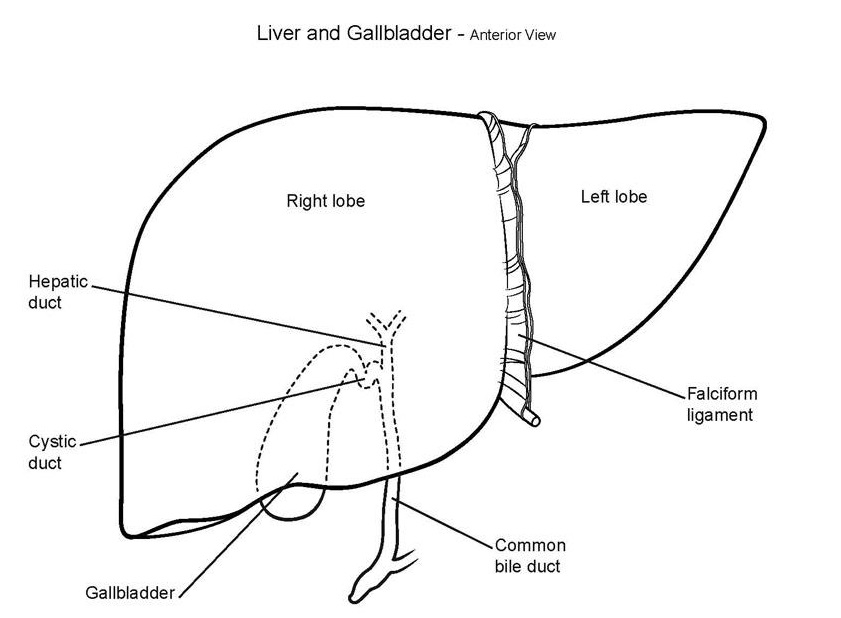Liver
Definition
o Largest gland associated with the GI Tract
o 1-2 Kg
Location
o Upper part of the abdominal cavity
o Occupies the right hypochonndrium
o Epigastrium
o Extending into the left hypochondrium
Surfaces
o Anterior surface smooth
o Posterior surface irregular
o Inferior surface
Relations
o Anteriorly - diaphragm and anterior abdominal wall
o Inferiorly - stomach, bile ducts, duodenum, hepatic flexure of the colon, right kidney and adrenal gland.
o Posteriorly - oesophagus, inferior vena cava, aorta, gall bladder, vertebral column and diaphragm
o Laterally - lower ribs and diaphragm
Supports
o Thin capsule peritoneum
o Folds of peritoneum attaching the liver to the diaphragm - ligaments
o Held in position by the ligaments and the pressure of the abdominal organs
Lobes
o Right lobe
o Left lobe
o Quadrate lobe
o Caudate lobe
Right lobe is larger than Left lobe
Porta Hepatis
o It is the door to the liver found on the posterior surface of the liver
o Portal vein enters
o Hepatic artery enters
o Nerves enter - both parasympathetic and sympathetic
o Right and left hepatic ducts leave liver
o Lymph vessels leave
Structure
o Tiny lobules lobes
o Lobules - hexagonal - formed by cubical cells called hepatocytes - arranged in columns - radiating from a central vein
o Sinusoid on one side of the column of cells bile canaliculi on the other side of the column of cells.
o The blood sinusoids contain blood which a mixture of arterial blood and portal venous blood
o Some cells lining the sinusoids are hepatic macrophages (Kupffer cells).
o Centrilobular veins - hepatic veins - IVC.
o Bile canaliculi - right and left hepatic ducts - porta hepatis - common hepatic duct.
Applied Anatomy
Viral infections of the liver by hepatitis (A / B) virus cause inflammation of the liver - Hepatitis A or Hepatitis B - leading to jaundice
Obstruction to hepatic ducts, common biliary duct causes obstructive jaundice
Cirrhosis liver - destruction of the liver cells leading to replacement of the hepatic cells with fibrous tissue - stranglin of the ducts of the liver - leads to portal hypertension and subsequent ascites - collection of fluid in the peritoneal cavity
Functions of Liver
Functions of liver
o Synthesis of plasma proteins
o Synthesis of vitamin A
o Production of heat
o Metabolism of alcohol
o Conversion of glucose to glycogen for storage
o Storage of fat soluble vitamins: A,D,E, K, iron, copper, some water solble vitamins e.g. riboflavine, niacin pyridoxine, folic acid and vitamin B12
o Desaturation of fat
o Deamination of amino acids
o Transamination - removing the nitrogenous portion of amino acids and adding it to other carbohydrate molecules forming new non-essential amino acids
o Breakdown of erythrocytes
o Detoxification of drugs
o Inactivation of hormones
o Secretion of bile to excrete bilirubin




